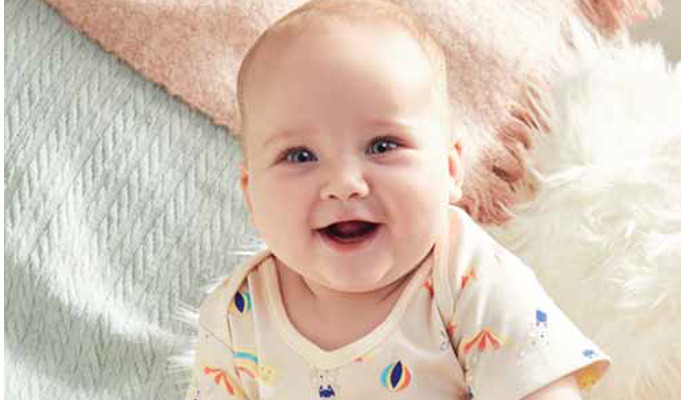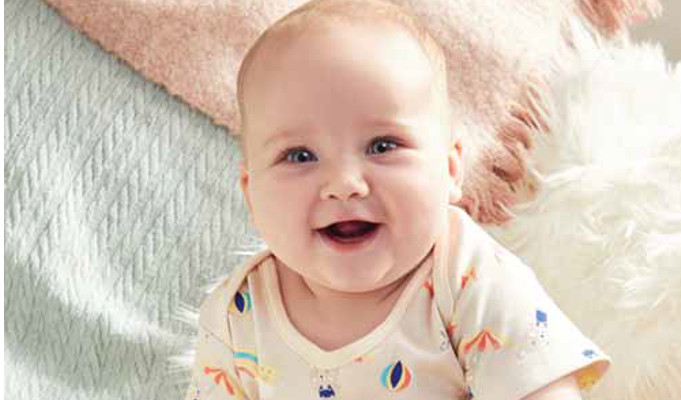
Fashion is one of the most polluting industries in the world, responsible for 10 percent of the world’s carbon footprint. The big names in retail are taking note, working towards sustainable fashion in a bid to reduce this carbon footprint. Consumers too are becoming more responsible, especially millennials, who opt for eco-friendly fashion in a bid to save the world, one garment at a time.

One segment whose target audience is a massively influenced by sustainability and moving towards more natural, organic fibres is kidswear retail, as both parents and young consumers look for fashions that are eco-friendly. One reason driving the sustainability trend within kidswear in India is that Indian parents place a higher degree of emphasis on quality for their children than for themselves.
According to Kavita Mallick, Head of Business, MiniKlub, “Sustainable and eco-friendly kidswear is the new fad which is picking up in the Indian market. Requirement for quality and safe products has increased drastically over the years. We feel that a similar demand for sustainable and eco-friendly fabric will increase in coming years in kidswear segment with increased awareness.”
Indian consumers are getting increasingly concerned for the environment and about the impact of their fashion consumption on nature. They are also increasingly aware of their children’s needs, and particularly of the sensitivity of their children’s skin.
“With growing exposure to pollutants and toxins in most clothes available today, there is a significant rise in the number of children prone to allergies, skin rashes, respiratory disorders amongst other threats to health. With the aim of safeguarding the health of children and the conservation of our planet, Greendigo offers 100 percent organic clothing certified by GOTS (Global Organic Textile Standard) which not only affirms the organic status of raw materials but also guarantees that the manufacturing processes are socially and environmentally responsible,” explained Meghna Kishore, Co- Founder & Director, Greendigo Organic Clothing.
Understanding & Investing in Sustainable Kidswear
Due to increasing health and environmental consciousness amongst better educated Indian parents, the demand for organic kidswear has been increasing. A growing number of companies have invested in this category and are marketing these products based on the psychology of conscious and mindful parenting – parents who are well travelled, globally connected and who want to provide the best for their children. Retailers target parents who make a purchase weighing all the pros and cons. These informed parents often want to ensure that the clothes they have purchased are authentically organic.
“While parents are aware of the choices they make, authenticity of the garment being actually organic is often questionable. Moreover, there is a misconception that organic and sustainable clothes aren’t stylish, bright or vibrant,” said Kishore.
At Greendigo, customers are rest assured of the authenticity of their purchase with the GOTS certification which comes attached to every garment. Devoid of any artificial fertilizers, chemical pesticides and toxic colours or dyes, Greendigo’s clothes are gentle on the sensitive skin of children. Garments made of organic cotton are long lasting and durable, making them a perfect choice for play time every day.
“What’s more, our clothes come in bright, fun colours and styles and are machine washable too, making them easy to maintain,” she said, adding, “We believe in transparently presenting facts and figures pertaining to the positive impact that purchase of organic clothing has on the health of children and the environment. We also highlight the functionality of our products such as our heat-transfer labels and fl at seams which prevent irritation and itchiness in kids. The fact that our clothes are machine washable and are chemical-free makes them safe even for children with sensitive skin. This helps project our products as an easy fit in the challenges of bringing up a child in today’s complex environment.”
According to Mallick, almost all the brands today are aware about the demand for sustainable fabric and are gearing up to serve their consumers better. “From a consumer’s point of view, sustainability is still a new concept and a lot of awareness needs to be built around it by retailers.
As a brand we need to create this awareness first among our consumers to understand the demand. Brands should start talking about it loudly to their consumers and then work towards making sustainable clothing affordable,” she adds.
MiniKlub believes in spreading the message by word of mouth of customers – that organic clothing is absolutely safe to use. “It’s important to communicate that organic clothing will help you to have a better, sustainable future. Our objective is not just to increase our bottom lines by introducing an organic range to our consumers, it is to serve a larger purpose — a sustainable future and above all making it affordable for consumers to bring in a change,” she said.
Social Media: Commerce with Like- Minded Consumers
Though dominated by organised and global brands, the kidswear segment has witnessed an increasing number of kidswear brands emerging in recent years, especially by smaller players. These small players typically use social media and blogs to sell their products. They usually use quality and ethics as differentiation tools – exclusively offering organic ranges, for instance.
“With brands and consumers being directly connected today, product development tends to become more relevant basis the consumer’s needs/ feedback. Being connected directly with consumers also makes it easier to understand the consumer’s pain points and off er the right products to address the same,” explained Kishore. “We constantly put out information on our brand’s social media pages which makes our audience feel involved – be it information on our organic products, our brand values centered on sustainability and ethics, upcoming collections or behind the scenes footage of the manufacturing processes. Audiences who relate to our brand’s narrative and values are truly our best sounding boards,” she adds.
Mallick added, “India’s growing digital penetration and affordable data have made life easier for brands to connect with like-minded consumers. The idea here is to build content which connects to your consumer segment and keep this content relevant. It is easier to target, understand social behaviour and tailor make your offering. Very important of all is that online media is affordable and can be used efficiently, effectively and you can measure your deliverables.”
Opportunities in Organic Kidswear
Going forward, Kishore asserted, “While with increasing eco-consciousness, this category is growing steadily there is a need to educate and make the audience aware of the positive impact that each purchase has on the environment and health of our children, farmers and factory workers. Furthermore, the cloud of misconceptions that organic clothing is dull and not stylish, is unavailable in bright colours, is difficult to maintain and is only for occasional wear, needs to be addressed. The widespread adoption of organic clothing will happen when consumers realise that organic garments can be fun, affordable, low maintenance and for everyday wear.”
Mallick concluded by saying, “The opportunity in India is huge – this will bring in a sea of change not only for brands but also for manufacturers. Brands will always strive to explore opportunities to deliver the promise of sustainable products to the end user. This is not only restricted to the products you manufacture but to different touchpoints in the value chain, be it logistics, packing or the way the product is presented. Once this process starts to kick in you will start to see change. All of us in the kidswear vertical should start implementing this into our DNA to make sure this change continues and all of us can reap benefit from this in the future.”


